NEW YORK—The most prominent realist art competition, and the only one of its kind, the ARC Salon opened its exhibition to the public at the Salmagundi Club on May 13. The 12th annual international salon of the Art Renewal Center (ARC) can be seen in its entirety online.
In contrast to the fairs that highlight celebrity status and sales (such as the Venice Biennale in Italy, Frieze in New York, Art Basel in Miami, and so on), ARC Salon is an art competition on a grand scale. While it also displays works to be sold, its main aspiration is to uphold excellence in visual representation along the lines of the Paris Salons and Royal Academy of Arts exhibitions.
“After more than a hundred years of modernism’s fascination with the flatness of the canvas and ideas like form or color for their own sake, a growing number of artists, scholars, as well as the public have grown bored with these limited parameters of the definition of contemporary art,” said Frederick Ross, founder and chairman of the ARC, at a press preview on May 12. The educational foundation has been a leading force in reviving realism in the visual arts since it was founded in 1999.
A board of 11 judges—including museum directors, art historians, magazine editors and publishers, academy and atelier founders, and distinguished artists—selected 82 works out of 3,100 entries from 63 countries. The parlor and main gallery of the Salmagundi Club is packed full with paintings hanging side by side, carefully labeled according to award and category, including best figurative, portraiture, imaginative realism, social commentary, landscape, still life, trompe l'oeil, drawing, sculpture, and more.
“Since 2010, we have experienced double-digit growth each year to the number of entries submitted. This year alone, we had a 25 percent increase,” said Kara Lysandra Ross, ARC chief operating officer, at the press preview.
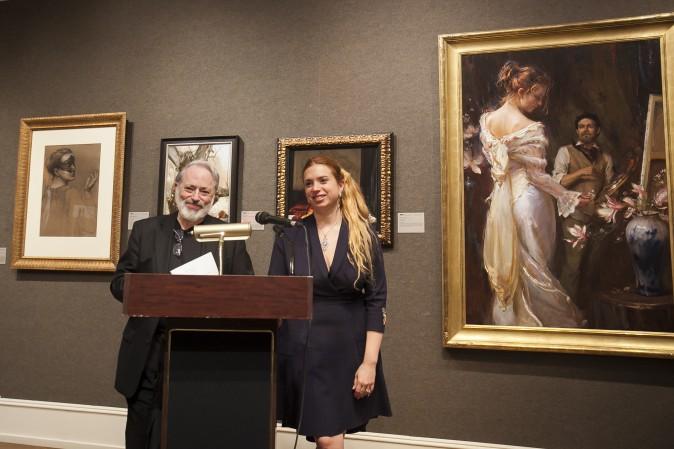
While the number of entries is much larger and its international scope much broader than any of the 18th- or 19th-century salons of Europe, ARC Salon has yet to have the status that it aspires to reach—not only in terms of being recognized for the quality of the work it champions, but more importantly in becoming fully embedded in mainstream culture.
Discerning Artistry
Frederick Ross is an art collector and leading authority on the 19th-century artist William Bouguereau. At the press preview, Ross eloquently pointed out, “Fine art at its best has the power to move one to tears, or grab your sensibilities and rivet you in the moment with an overwhelming sense of beauty and excitement.”
Several people at the opening on May 13 were highly impressed by ARC Salon, declaring the entire exhibition “Fabulous!” A Salmagundi member said he wished all exhibitions at the club could be of such high quality.
Yet looking at the works on display in the Salmagundi gallery and parlor, I only found a couple of paintings that really gave me “chills up and down my spine,” as Ross had prompted me to anticipate. He was spot on when he said, “It may be the rare work that accomplishes this.”
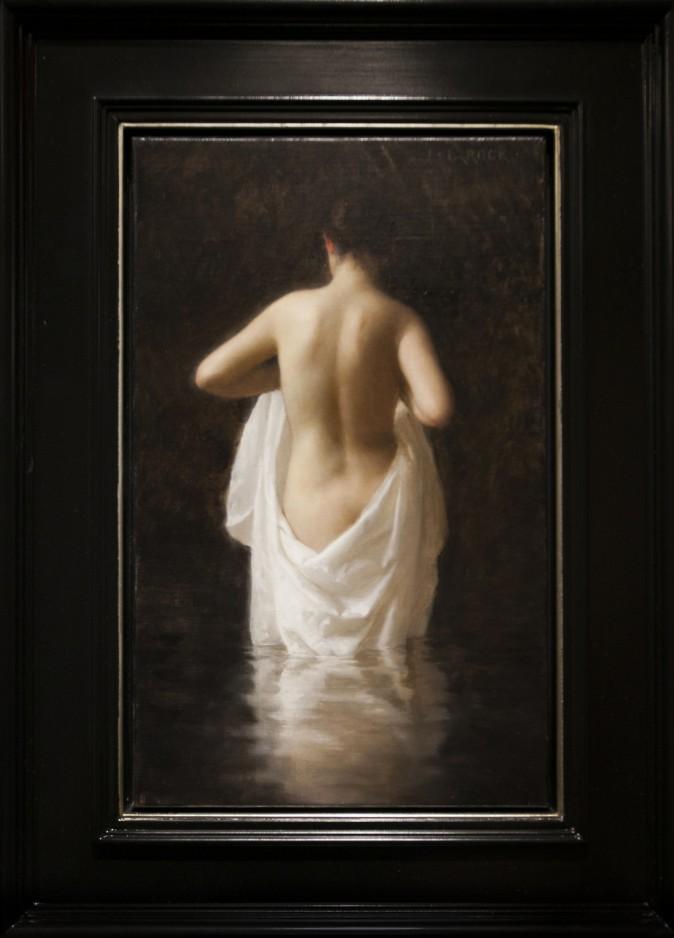
Still, I had hoped to see a better selection compared to other paintings I have seen in recent years. A handful of affecting works can actually be seen in a small, eclectic exhibition located literally steps above the ARC Salon, on the second floor of the Salmagundi. The modest exhibition of seven artists, running through May 19, includes works by Cornelia Hernes, who won second place in the ARC Salon for her drawing “The Storyteller,” which depicts a masked character from the Italian theater tradition of commedia dell'arte.
At the VIP reception on May 12, as well as at the public opening the following day, I asked several artists for their opinions on this year’s competition. I agreed with their general consensus that most of the paintings seem to be “shouting,” to the point where it was difficult to fully appreciate the remarkable works that spoke gently and mysteriously—works that would invite you to see them again and again.
Dale Zinkowski, one of the artists whose stunning portrait drawing and male figure painting are displayed on the second floor, said viewing the ARC Salon was like trying to listen to a virtuoso violinist play in the middle of a hard metal concert.
Another artist said most of the paintings give off a superficial visual impact that is more akin to commercial illustration trying to sell a product than it is to fine art. Another wished the paintings would convey a depth of meaning, both technically and in subject matter, that is intrinsically rooted in tradition or to a historical or spiritual understanding of our world. Other paintings looked exactly like photographs, which begged the question of why one would paint in that way when one could just as well take a photo.
Kara Ross pointed out that the only way to process the 3,100 entries was, of course, to receive them in photographs to be judged onscreen. That method alone creates a bias towards choosing works that translate well on electronic screens, by artists who most likely used photographs as a reference or painted entirely from a photograph instead of from life. This probably accounts for the sense of shouting when the paintings are seen in person. They lack the subtlety of conveying values and forms that can only be depicted from observing and representing life directly.
[gallery size=“medium” ids=“2251073,2250855,2250871,2251079,2250860,2250902,2250881,2251089”]
The paintings that quietly stood out above the rest, and which were most likely created from life or partly from the imagination, included a small figure painting of a woman holding a white sheet around her, standing in a body of water, titled “Bather” by Joshua LaRock. He also submitted an elegantly tender portrait of his wife, “Laura in Black,” which won the ARC Purchase Award.
“Blowing Smoke: Portrait of Aaron Shikler” by Nicole Moné, which won duel category awards in both the figurative and portraiture categories, also invites return visits, as do “The Coming Rain” by Dave Santillanes, the first-place winner in the landscape category, and “Perception of Self” by 15-year-old Ray Wanda Totanes, winner of the Da Vinci Initiative Award for the Young Aspiring Artist, among a few others.
Representational Art at a Crossroads
Since the advent of modernism and the various other “-isms” that ensued in the arts, the systematic deskilling in visual literacy has been devastatingly prevalent in schools and universities, and consequently for the general public, most notably after World War I.
We have more access to information than at any other time in history, yet our visual literacy could arguably be worse than it was during the Dark Ages. “We are in the Dark Ages,” said Mandy Hallenius, president of the Da Vinci Initiative, a nonprofit educational foundation affiliated with ARC that teaches atelier skills to K-12 art teachers.
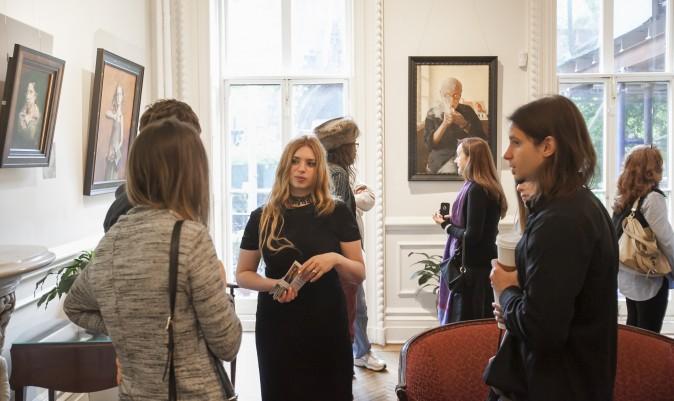
Undoubtedly, ARC is commendable for resolutely and painstakingly helping to revive representational and realist art since it was founded 18 years ago. At that time, ARC’s website “was the only public voice championing the cause of bringing realism back to the visual arts, providing responsible views opposing those of the modernist art establishment,” Kara Ross said. “This movement now has thousands of practicing artists and thousands more studying at ARC Approved schools and academies.”
Now the best step to further growth would be for larger, more established cultural institutions and for the general public to get more involved. The main problem the ARC Salon faces is that it is the only one of its kind; it is monopolizing a niche. It is ambitious in scope but suffers from a selection method that is done for the most part electronically and therefore does not fully do justice to the medium of oil painting especially.
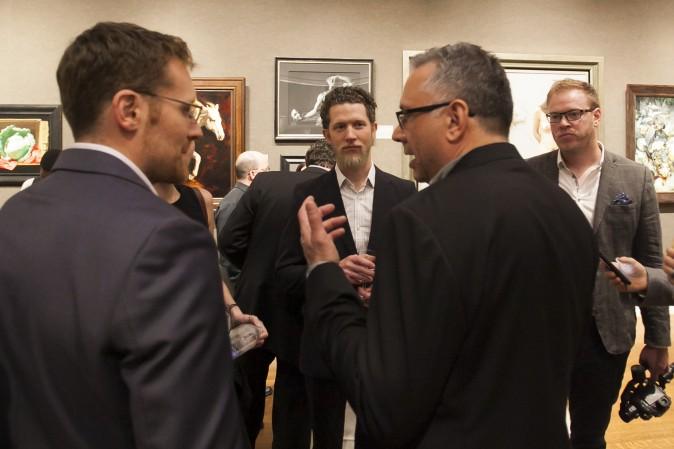
If the ARC Salon could be considered a kind of transmigration of the Paris Salon—that most prestigious annual or biannual art event of the Western world, spanning almost 150 years (circa 1667–1890)—it would be good to learn a little from history.
As the only major art show in France, the Paris Salon exerted a massive influence on artists’ careers, shaping the kinds of works that would be submitted. Its traditionalist standards and high rejection rate of paintings in 1863 gave way to the Salon des Refusés (exhibition of rejects).
In the case of ARC Salon, the restrictions that may become detrimental to the movement are, ironically, the reverse: That is, the temptation to shirk requirements in favor of inclusiveness over quality, and an over-reliance on technology.
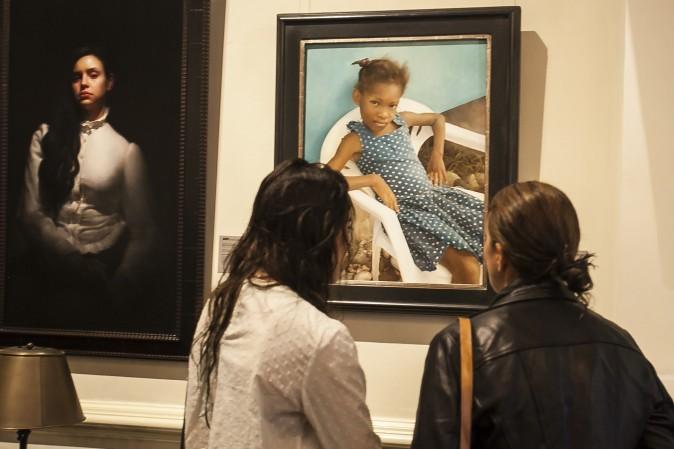
It would be interesting to see if more established cultural institutions and museums, such as The Metropolitan Museum of Art, for instance, would partner with ARC or start their own salons of highly skilled representational artists who create, for the most part, from life. Perhaps the entire selection process, including the categories and subject matter highlighted, would produce quite a different looking salon—hopefully one that would inspire more chills of awe running up and down our spines.
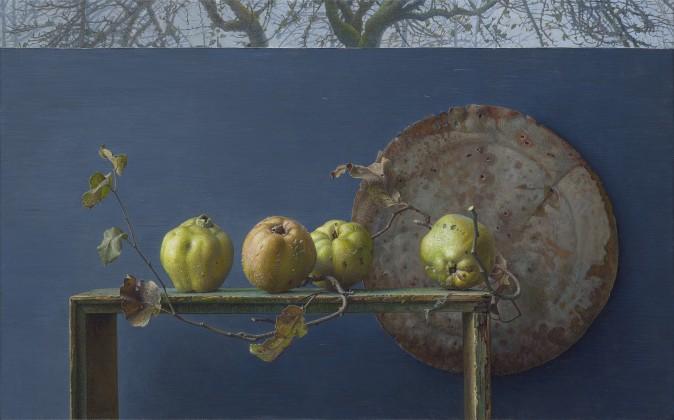
A Thriving 21st Century Art Movement
We are living at a time when the art community has become increasingly pluralistic, encompassing a wide variety of genres. Along with work labeled as contemporary art, the resurgence of realism in the past 20 years has also diversified in approaches and styles at a pace that makes it difficult for art critics and historians to figure out what to call them.
As an umbrella organization, the aim of ARC is to provide a platform for all kinds of realist art, said Kara Ross during a follow up interview on May 26 at the Salmagundi Club. Similar to how modernism encompasses several –isms (Cubism, Dadaism, Surrealism, Abstract Expressionism, and so on), in realism—which is large enough to constitute an art movement—there is traditional realism or classical realism, contemporary realism, imaginative realism, photorealism or hyperrealism, among other classifications. Kara Ross suggested using the term, “21st Century Realism,” for describing all of these combined.
Representational drawing, painting, and sculpture are now acknowledged as significant elements in 21st century art. Yet, because of the dominance of other kinds of works in the contemporary art world—including, installation, digital, abstract, conceptual and social practices—the general public seems to be mostly unaware of this thriving realist art movement.
Kara Ross had talked with a collector during the ARC Salon opening who told her that he was completely unaware of the magnitude of realism today, and that “this must be the next generation of famous artists,” she said. Many people who saw the ARC Salon exhibition at the Salmagundi Club for the first time were surprised and stunned, she added.
ARC has played a significant role in this resurgence of realism, not only in the United States but internationally.
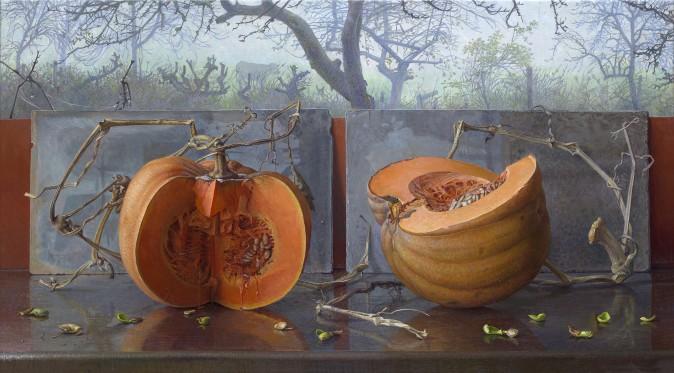
The Dutch artist, Joke Frima whose two paintings were finalists in the still life category in the ARC Salon was very pleased to participate in such a platform. It gave her work broader access to viewers and collectors, beyond her gallery in Amsterdam. “To be singled out on the basis of quality and skill, to be recognized as a living master [by ARC] is an enormous encouragement. It’s very necessary for a painter like me, working in a solitary situation,” Frima wrote in an email. Her painting, “Eternal Return” will be exhibited in Barcelona in the MEAM in September 2017 to January 2018.
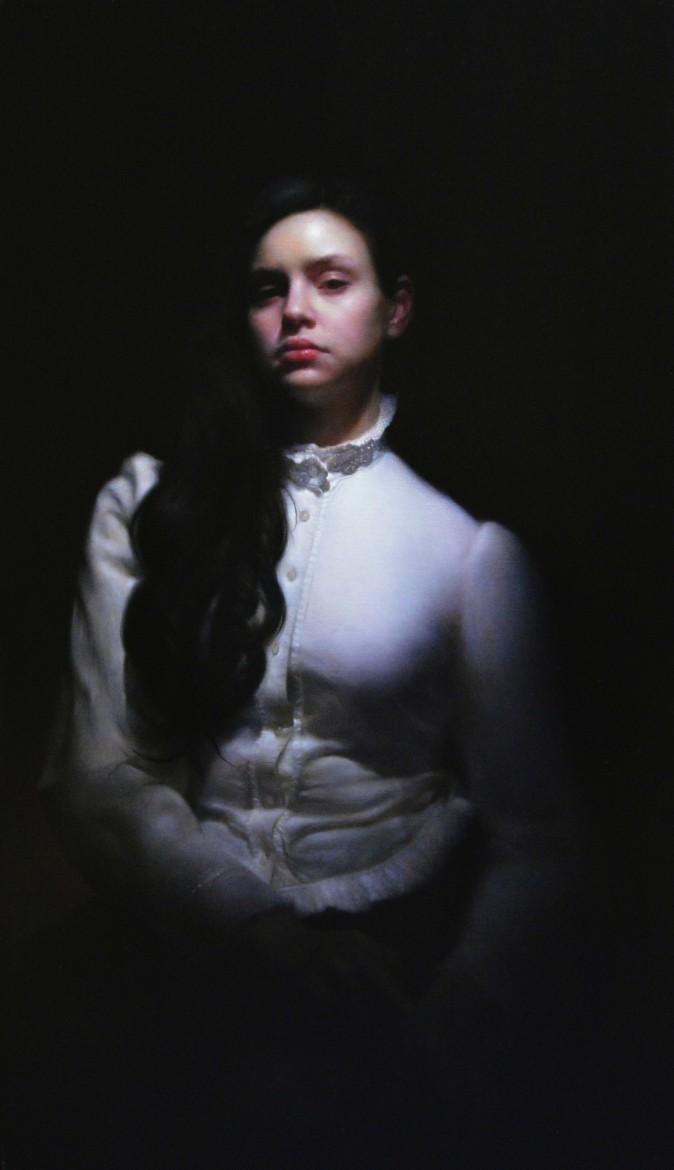
The Boston based artist Emanuela De Musis, who teaches at The Academy of Realist Art, won both first and second place in the portraiture category of ARC Salon—“Miss Rachel” and “Fitter and Waste,” respectively. She said she took over 150 hours of model time to paint “Miss Rachel.” She was thrilled to be included in the ARC Salon because the work is seen by so many. “The addition of the traveling exhibition made it even more exciting,” she wrote in an email. “Seeing works in person is obviously so much more desirable to viewing online or in print. I feel that the ARC Salon reached a different level when they introduced the live exhibition [i.e., in addition to online, at Salmagundi and at MEAM Museum].”
One of the landscape finalists, Ken Salaz felt it was “a great honor to be included in the 2017 ARC exhibition,” which he wrote in an email. “The ARC Salon is modeled in a tradition that speaks to humanity throughout time—that of classical artistic representation of our lives and the world we live in—a striving for meaningfulness. The Salon is the most successful and boldest attempt to disseminate an art form that has been overshadowed by Modernism yet speaks to the soul of every age,” he added.

Kara Ross expressed how the ARC Salon rotates its judges every year to ensure that all aspects of this 21st century realist movement are considered. In general they are not as concerned with the artist’s methods or approaches to drawing, painting, or sculpting but look at the end result. When looking at one piece at a time, they ask themselves, “Is this a powerful image? Do you feel what the artist is communicating? Can you see the artist’s voice? Are they getting a message across that doesn’t need words to explain it?” she said.
Whether you are familiar with this 21st century realist art movement already or are just learning of it’s existence, the ARC Salon can give you a glimpse into a world that is fast expanding and leading a new direction in the art world.
The ARC Salon exhibition will be on view at the MEAM Museum in Barcelona, Spain, from Sept. 22 to Nov. 26.
Follow @milenefernandez on Twitter or @milenejf on Instagram

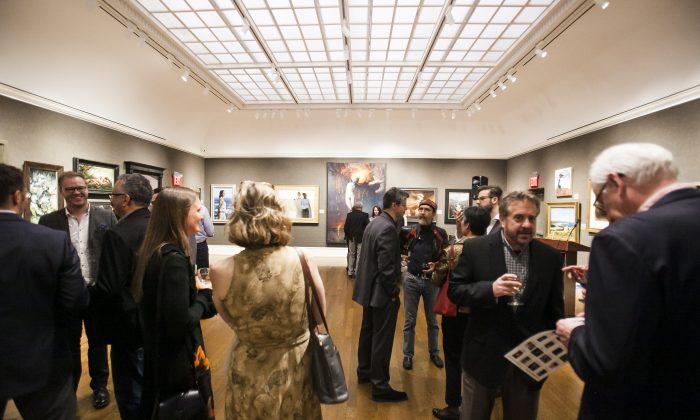

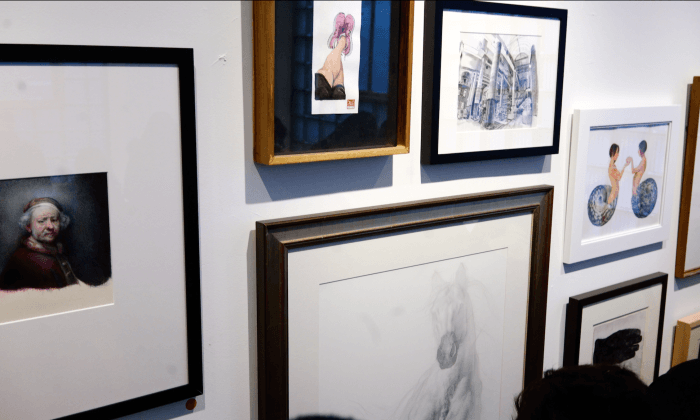
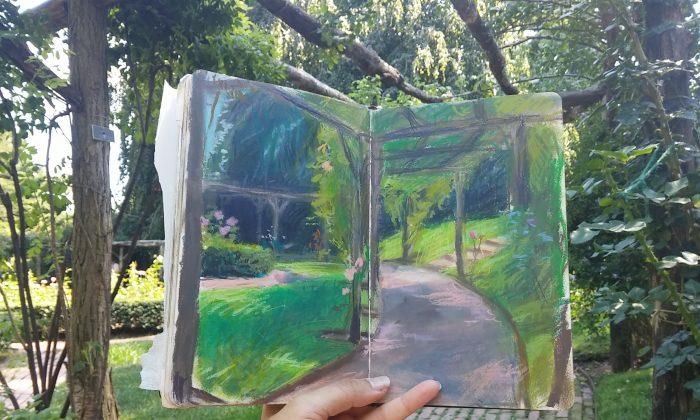
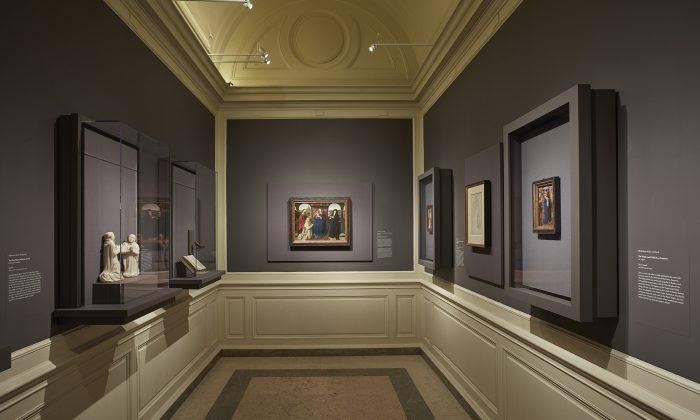
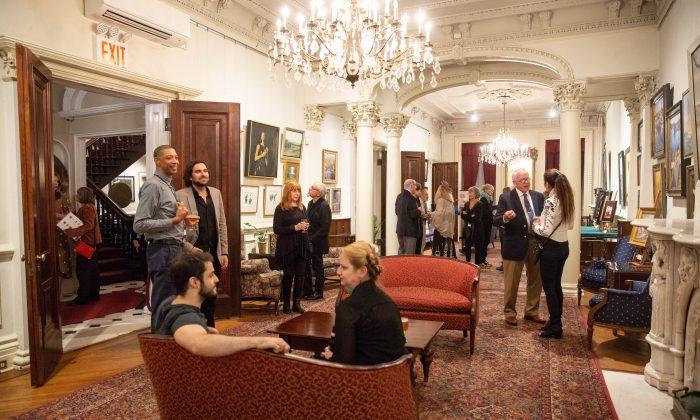
Friends Read Free